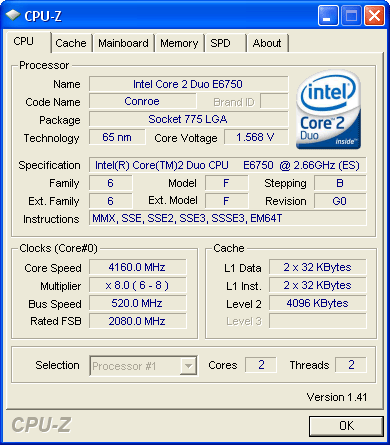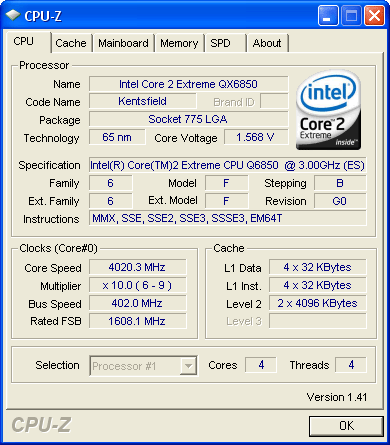Can Water push Yorkfield to 5 GHz?
The Competitors: Overclocked Conroe And Kentsfield

Our Core 2 Extreme QX9770 was far from the first Core 2 architecture CPU that was able to exceed 4 GHz on liquid cooling: our Conroe-based Core 2 Duo E6750 has been running nearly 4.2 GHz for months.

The E6750 is also the first processor we tested that could consistently run beyond 500 MHz FSB clock (FSB-2000), reaching 520 MHz FSB at its default 8x multiplier, and a bit more than 540 MHz FSB using a lower multiplier. By comparison, our four-core QX6850 could barely break 4.0 GHz clock speed while requiring far lower bus speeds.

The Kentsfield four-core processing unit comprises two Conroe core dice side-by-side, and both our Core 2 Extreme QX6850 and Core 2 Duo E6750 use the same G0 stepping revision. As such, these were also overclocked using the same 1.60 volt core setting, and neither became excessively hot using a voltage we once thought was a little insane before Dell started providing warranties on similarly-overclocked systems.
The Motherboard: Gigabyte GA-P35T-DQ6
Intel "recommends" the upcoming X48 chipset for the QX9770's FSB-1600 (400 MHz FSB clock), but the X48 is really just a spin on the current X38. Several manufacturers even claim certain X38 boards are already FSB-1600 compatible, through manufacturer BIOS manipulation. Our experience has shown that the simpler P35 has slightly better overclocking potential, and is able to tolerate slightly lower DDR3 memory latencies. For these reasons, we brought back the overclocking leader of our P35 DDR3 Motherboard Comparison: the Gigabyte GA-P35T-DQ6.

Beta BIOS version F5c is compatible with 45 nm Yorkfield processors, and even includes automatic detection and configuration of the QX9770's new FSB-1600.
Stay on the Cutting Edge
Join the experts who read Tom's Hardware for the inside track on enthusiast PC tech news — and have for over 25 years. We'll send breaking news and in-depth reviews of CPUs, GPUs, AI, maker hardware and more straight to your inbox.
Current page: The Competitors: Overclocked Conroe And Kentsfield
Prev Page Yorkfield Overclocking Next Page The Memory: Super Talent DDR3-1600Most Popular


